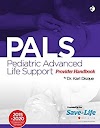
Circulation of blood is vital for the survival of vertebrates, including man. Mainly, it plays an important role in carrying food nutrients and oxygen to every tissue and organ and in removing all waste products and carbon dioxide. Any imbalance in the hemostatic and cardiovascular systems can lead to death and severe debility. A number of animals have developed mechanisms to target these systems and exploit the vulnerability. In some species (for example, snakes), such mechanisms are used to immobilize and kill the victim/prey, whereas in others (for example, insects, such as leaches, mosquitoes and ticks), they are used to provide a continuous supply of blood. These mechanisms include, but are not limited to, procoagulant and anticoagulant actions that affect the coagulation cascade and platelet aggregation, as well as altering vasodilatory responses. In all these various animals, these mechanisms have evolved to perfection over millions of years to support their survival. In last 3-4 decades, due to the efforts of scientists from various backgrounds including biology, protein chemistry, molecular biology, pharmacology, hematology, and structural biology, significant progress in understanding the structure-function relationships, as well as the mechanism of action have been made in a number of exogenous factors that affect blood coagulation, platelet aggregation and vasodilation from various animals. These exogenous factors have contributed significantly to the development of research tools as well as providing new therapeutic agents. With the increase average age of the population coupled with changes in life style in recent years, there has been a significant increase in cardiovascular and hematological disorders. Thus scientists in both academic institutions as well as the pharmaceutical industry are developing better therapeutic agents to improve the quality of life. This impetus has lead to the search for novel agents from various sources that interfere with cardiovascular and hematalogical processes. Although at first glance exogenous factors appear to function as ‘villains’, several life-saving drugs have been developed based upon these factors. Such drugs or drug leads include those that inhibit the angiotensin converting enzymes (Captopril and Enalapril), that block platelet receptors (Eptifibatide and Tirofiban), or that digest thrombotic plugs (Alfimeprase and bat plasminogen activator) to name a few. Several new and exciting success stories are currently unfolding. In this book, recent studies on some of the exogenous factors that play crucial roles in cardiovascular and hematological disorders are reviewed in order to consolidate the efforts in this area of research and to recruit new, talented researchers. The 25-30 review chapters, each written by experts in their field, compiled herein are devoted to exogenous factors affecting platelet aggregation, anticoagulant and procoagulant proteins, fibrinolytic proteins and hypotensive agents (For details see, Contents of the Book). This book is intended to help to create elevated awareness and enthusiasm in the field of exogenous factors. I believe that this book will provide greater impetus to the search for novel proteins based on naturally occurring exogenous factors. This will be the first book dealing extensively with exogenous factors in the last 25 years. The book will provide a ready reference to the different approaches used to solve complex problems in protein chemistry and pharmacology of exogenous factors. The book will update our understanding of the structure-function relationships and mechanisms of action of exogenous factors and provide great insights into future directions for solving the remaining challenges.
Table of contents :
Front Matter....Pages i-xxiii
Front Matter....Pages 11-11
Introduction....Pages 1-9
From the Bothrops Jararaca Bradykinin Potentiating Peptides to Angiotensin Converting Enzyme Inhibitors....Pages 13-17
Front Matter....Pages 19-19
Sialomic Perspectives on the Evolution of Blood-Feeding Behavior in Arthropods: Future Therapeutics by Natural Design....Pages 21-44
Snake Venomics, Antivenomics, and Venom Phenotyping: The Ménage à Trois of Proteomic Tools Aimed at Understanding the Biodiversity of Venoms....Pages 45-72
Insights in to Venom and Toxin Activities and Pharmacological/Therapeutic Potential Using Gene Expression Profiling....Pages 73-81
Bioactive Peptides and Proteins from Wasp Venoms....Pages 83-95
The Theory of Intraspecies Variation is Not the Exception, But Simply the Rule: The Diverse Hemostatic Activities of Snake Venoms....Pages 97-112
Tiny Ticks are Vast Sources of Antihaemostatic Factors....Pages 113-130
Sialogenins and Immunomodulators Derived from Blood Feeding Parasites....Pages 131-152
Salivary Protease Inhibitors with Non Anti-Hemostatic Functions....Pages 153-164
Front Matter....Pages 165-165
Blood Coagulation Factor IX/Factor X-Binding Protein....Pages 167-177
Bothrojaracin – A Potent Thrombin Inhibitor....Pages 179-199
Anticoagulant Phospholipases A 2 Which Bind to the Specific Soluble Receptor Coagulation Factor Xa....Pages 201-217
Hematophagy and Inhibition of the Extrinsic and Intrinsic Tenase Complexes....Pages 219-237
Thrombin Inhibitors from Haematophagous Animals....Pages 239-254
Anticoagulants from Scorpion Venoms....Pages 255-266
Front Matter....Pages 267-267
The Discovery of Disintegrins....Pages 269-284
Brief History and Molecular Determinants of Snake Venom Disintegrin Evolution....Pages 285-300
Anti-Angiogenesis and Disintegrins....Pages 301-329
Hematophagy and Inhibition of Platelet Aggregation....Pages 331-357
Front Matter....Pages 267-267
Snaclecs (Snake C-Type Lectins) that Inhibit Platelet Receptors....Pages 359-368
Front Matter....Pages 369-369
Plasminogen Activators from Snake Venoms....Pages 371-392
Bat Plasminogen Activator: Desmoteplase – From Bat to Bench to Bedside of Stroke Victims....Pages 393-407
Fibrolase and Its Evolution to Clinical Trials: A Long and Winding Road....Pages 409-427
Streptokinase....Pages 429-444
Front Matter....Pages 445-445
Activation of Factor X by Snake Venom Proteases....Pages 447-464
Structural Aspects of the Factor X Activator RVV-X from Russell’s Viper Venom....Pages 465-484
Snake Venom Prothrombin Activators – The History....Pages 485-499
Origin and Evolution of Snake Venom Prothrombin Activators....Pages 501-517
Thrombin-Like Enzymes in Snake Venoms....Pages 519-557
Procoagulant Factors from Lonomia Caterpillars....Pages 559-574
Staphylocoagulase....Pages 575-590
Procoagulant Properties of Plant Latex Proteases....Pages 591-603
Front Matter....Pages 605-605
The Biologic Activity of Aggretin/Rhodocytin, a Snake Venom C-Type Lectin Protein (Snaclec)....Pages 607-620
Snaclecs (Snake C-Type Lectins) that Activate Platelets....Pages 621-636
The Effect of Bacterial Toxins on Platelet Function....Pages 637-651
Front Matter....Pages 653-653
Hypertensive and Hypotensive Snake Venom Components....Pages 655-672
Hypotensive Proteins from Hematophagous Animals....Pages 673-696
Front Matter....Pages 697-697
Snakebite-Induced Coagulopathy and Bleeding Disorders....Pages 699-710
Antivenoms and Coagulation....Pages 711-721
Front Matter....Pages 697-697
Biological Activities of Snake Venom Metalloproteinases on Platelets, Neutrophils, Endothelial Cells, and Extracellular Matrices....Pages 723-732
Front Matter....Pages 733-733
Leeches in Microsurgery – An Evidence-Based Approach....Pages 735-745
Diagnostic Use of Snake Venom Components in the Coagulation Laboratory....Pages 747-766
Back Matter....Pages 767-797





















